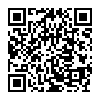
I’m not talking about the city on the western seaboard of the United States. I’ve never been there, so I couldn’t say. I am, of course, referring to the new system typeface that adorns all Apple devices —
The San Francisco typeface is a beauty.1
I have always been a fan of the Helvetica typeface. I love its simplicity and its clarity. I applauded when Apple adopted Helvetica Neue as the system font, first with the launch of iOS 7 and subsequently with OS X Yosemite. Yet Apple’s choice was subject to considerable derision from more discerning typographers and designers.
Critical voices abounded. Detractors wrote articles; they raged on forums and in website comments; Twitter shuddered. It was clear, the Internet wasn’t happy with Helvetica Neue as a system font. The fact that Apple had initially chosen the ultra-light variant only served to further inflame opinion.
One of the main criticisms is that Helvetica Neue becomes increasingly difficult to read as the point size decreases and that is unarguable.
“Stephen Coles, a typographer and editor of multiple typography publications, cites a number of problems with the (sic) Helvetica Neue: Uniformity of lettershapes makes it difficult to read at small sizes; many characters are so similar they can be confused (e.g. lowercase ‘l’ and uppercase ‘I’); the apertures, or openings in letters characters (sic) like ‘e’ and ‘9,’ are small, causing them to blur; tight spacing makes the space within letters much larger than the space between letters, further straining the eyes.” What’s all the fuss about Apple and Helvetica Neue?
San Francisco, on the other hand, is supremely readable at small point sizes. It was explicitly designed that way.
“The San Francisco Text fonts, which are used for texts in small sizes, are designed to have more margins than the Display fonts. And the apertures of the Text fonts are also wider in order to be legible in small sizes.” The Secret of the Apple’s New San Francisco Fonts
To my —
There is a clarity to the font that increases its readability when compared with Helvetica, on digital displays. The glyphs have slightly more weight than those of its counterpart. The apertures are larger. There’s more room for the font to “breath”.
I keep noticing it. I see a body of text and it impresses me with its typographic coherence and how pleasing it is to the eye. When I use my RSS client, Reeder, which uses San Francisco as its default font, I’ve noticed I read for longer. I read articles fully as opposed to simply skimming them. I put this down to the fact that San Francisco is so pleasant to read. In Apple’s Dictionary application, the text is crisp, confident and fresh. I see it throughout the UI in OS X El Capitan. I see it in how easy the small icon fonts in iOS 9 are to read. The list goes on…
One criticism I do have, in common with others, is that Apple should have done something more to distinguish the lower-case l (Lima) from the upper-case I (India). The two are almost indistinguishable, even on the high-resolution Retina displays of my MacBook and iPhone.
“DIN really shines here. The finial at the end of the lowercase l adds a style and personality to the typeface. Love it or hate it for this reason —
it’s the most easily distinguished and therefor (sic) legible l in these examples. Admittedly, this is an edge case, and when viewed in the context of other letters in body copy, in most cases it’s not really a problem.” Nick Keppol
Personally I would have preferred that Apple adopted a DIN-like glyph for the lower-case l (Lima). For myself, that would have made San Francisco almost the perfect typeface. Maybe Apple will address this in some future revision.
San Francisco is Apple’s first new typeface in nearly 20 years. The company has created a contemporary typeface especially for the devices of our time. This modern font sits well in the mature user interfaces of today’s OS X and iOS. Minor criticisms aside, I think it’s a winner.
Further Reading
- Nick Keppol’s “Arriving at San Francisco”: Part 1 & Part 2;
- The Secret of the Apple’s New San Francisco Fonts;
- Why Apple Abandoned the World’s Most Beloved Typeface ;
- Apple Developer: Introducing the New System Fonts.
-
Of course I understand that beauty is in the eye of the beholder. The aesthetics of a typeface might appeal to one observer while another reviles it. That’s the nature of the beast. ↩︎
 I ♥︎ San Francisco
I ♥︎ San Francisco